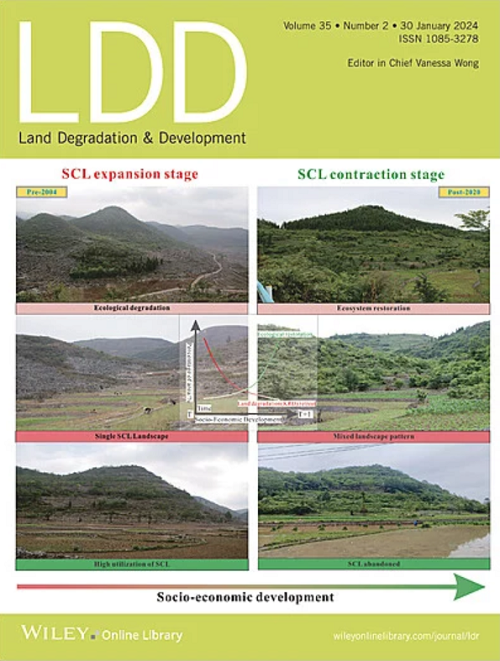公园利用干扰对喀斯特城市残山生境植物多样性的影响
IF 3.7
2区 农林科学
Q2 ENVIRONMENTAL SCIENCES
引用次数: 0
摘要
城市残余物生境是重要的生物多样性热点,正面临着城市扩张和基础设施建设的严重威胁。然而,公园利用对这些生境植物多样性的影响尚未得到充分探讨。以喀斯特山区贵阳市8个城市残余山公园为研究对象,构建了公园利用干扰的综合评价体系,涵盖4个维度的11个指标。分析了植物多样性对不同干扰类型和强度的响应,确定了优势干扰因子,探讨了生境斑块面积与植物多样性的关系。结果表明:在严重和中度公园利用干扰下,绿地斑块的植物多样性高于轻度干扰区;生境破碎化和游客容量是主要的干扰因素。生境斑块越大,植物多样性越高,表现出明显的面积效应。此外,保持URMP植物多样性具有面积阈值效应。维持植物多样性所需的最小生境斑块面积各不相同:群落级丰富度为1.5 hm2,乔木、灌木和草本层为1.0 hm2,各级的Shannon-Wiener指数和乔木层的Simpson指数为0.5 hm2。阈值驱动的管理策略应优先考虑维护核心栖息地;1.5 hm2,在高峰期实施游客流量控制,并保持栖息地斑块之间的连通性。该研究有助于从理论上认识干扰与生物多样性之间的相互作用,并为城市剩余生境中城市生物多样性的保护与利用提供有价值的见解。本文章由计算机程序翻译,如有差异,请以英文原文为准。
Effects of Park Utilization Disturbance on Plant Diversity in Karst Urban Remnant Mountain Habitats
Urban remnant habitats, which are crucial biodiversity hotspots, are facing severe threats from urban expansion and infrastructure development. However, the impact of park utilization on plant diversity in these habitats remains underexplored. This study focused on eight urban remnant mountain parks (URMP) in Guiyang City, China, a karst mountain region, and a comprehensive evaluation system for park utilization disturbances was established using 11 indicators across four dimensions. We analyzed plant diversity responses to different disturbance types and intensities, identified dominant disturbance factors, and explored the relationship between habitat patch area and plant diversity. The results indicated that plant diversity in green patches under severe and moderate park utilization disturbance was higher than in areas with slight disturbance. Habitat fragmentation and tourist capacity were the primary disturbance factors. Larger habitat patches were associated with higher plant diversity, showing a clear area effect of habitat patches. Additionally, maintaining plant diversity in URMP had an area threshold effect. The minimum habitat patch area required to maintain plant diversity varied: 1.5 hm2 for community‐level richness, 1.0 hm2 for arbor, shrub, and herb layers, and 0.5 hm2 for the Shannon–Wiener index at all levels and the Simpson index at the arbor layer. Threshold‐driven management strategies should prioritize maintaining core habitats > 1.5 hm2 , implementing visitor flow controls during peak periods, and preserving connectivity between habitat patches. This study significantly contributes to the theoretical understanding of the interplay between disturbance and biodiversity and offers valuable insights into the conservation and utilization of urban biodiversity in urban remnant habitats.
求助全文
通过发布文献求助,成功后即可免费获取论文全文。
去求助
来源期刊

Land Degradation & Development
农林科学-环境科学
CiteScore
7.70
自引率
8.50%
发文量
379
审稿时长
5.5 months
期刊介绍:
Land Degradation & Development is an international journal which seeks to promote rational study of the recognition, monitoring, control and rehabilitation of degradation in terrestrial environments. The journal focuses on:
- what land degradation is;
- what causes land degradation;
- the impacts of land degradation
- the scale of land degradation;
- the history, current status or future trends of land degradation;
- avoidance, mitigation and control of land degradation;
- remedial actions to rehabilitate or restore degraded land;
- sustainable land management.
 求助内容:
求助内容: 应助结果提醒方式:
应助结果提醒方式:


